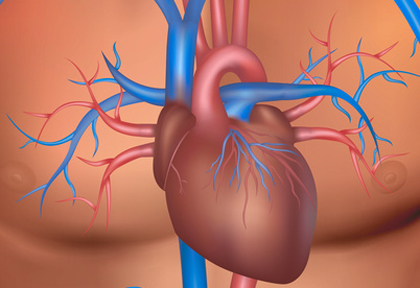Courtesy of Dr. Guillermo Migliaro.
 The Provisional Stenting technique (PS) consists of sequentially placing a stent in the main branch of the bifurcation and, only when faced with a suboptimal outcome (such as < 3 TIMI flow, flow limiting dissection or high residual stenosis), a second stent in the side branch. Several studies have shown that this technique is comparable to those involving systematic stenting of main and side branches, both in the short and the long term.
The Provisional Stenting technique (PS) consists of sequentially placing a stent in the main branch of the bifurcation and, only when faced with a suboptimal outcome (such as < 3 TIMI flow, flow limiting dissection or high residual stenosis), a second stent in the side branch. Several studies have shown that this technique is comparable to those involving systematic stenting of main and side branches, both in the short and the long term.
However, study outcomes are not homogeneous as regards inclusion/exclusion criteria for side branching, type of stent and technique, or bifurcation complexity, which calls for caution when it comes to treating individual patients.
The DKCRUSH II study compared the Double Crush Double Kissing outcomes (DCDK) against the provisional stenting technique at 5 years. This same study had already shown less need for target lesion revascularization (TLR) in the DCDK group at one year follow up.
This is an international, multicenter, randomized study comparing both techniques in the treatment of coronary bifurcations (Medina lesions 1.1.1 or 0.1.1) that presented the following MACE end points:
- Death
- Myocardial infarction
- TLR
The study included 370 patients (185 in each group). 99% completed the 5 year follow up.
At 5 year follow up there was a tendency, though not significant, in favor of DCDK (15.7% vs 23.8%; p=0.051).
- TLR was significantly lower in the DCDK group (8.6% vs. 16.2%; p=0.027).
- Definite and probable thrombosis was 2.7% in each group (p=1.0).
- After dividing the population according to bifurcation complexity (into simple and complex) TLR rate was higher in the complex bifurcations group (21.6%) compared to the simple bifurcations group (11.1%; p=0.037), especially in the provisional stenting group (36.8% vs 12.5%; p=0.005), latter being associated to final kissing balloon inflation (19.4% vs. 5.2%; p=0.036).
- When performed during procedure, IVUS had lower MI incidence than the angiography guided group (1.8% vs 5.4%; p=0.043).
Conclusion
The Double Crush Double Kissing technique for the treatment of coronary bifurcations is associated with lower target lesion revascularization rate compared to provisional stenting. This benefit could be even higher in complex lesions.
Editorial Comment
The present study is the first to report long term outcomes in the treatment of coronary bifurcation with DCDK. It is also the first to show a benefit that translates mainly as less need TLR and non-significant MACE rate reduction (that might reach statistical significance with a larger sample) or double vs. single stenting.
Classifying bifurcation lesions into simple and complex has proved extremely useful for study purposes. One major criterion: side branch obstruction higher than 90%, or > 10 mm in length. Or two minor criteria: > 25 mm main vessel lesion, calcified lesion or with thrombi or double bifurcation. Then MACE rate would be lower in the complex bifurcation DCDK group.
Final kissing balloon inflation in the provisional stenting group, as well as in the other studies, seems not to have a protective effect as regards events.
Once more, the use of images have shown benefits in the treatment of coronary bifurcation lesions.
When it comes to bifurcations, there is still a long way to go, one involving large scale studies to define the best technique and the role of dedicated stents in this context.
Courtesy of Dr. Guillermo Migliaro. German Hospital, Buenos Aires, Argentina.
Original Title: Clinical Outcome of Double Kissing Crush versus Provisional Stenting of Coronary Artery Bifurcation Lesions. The 5 –Year Follow Results From a Randomized and Multicenter DKCRUSH II Study (Randomized Study on Double Kissing Crush Technique Versus Provisional Stenting Technique for Coronary Artery Bifurcation Lesions).
Reference: Chen SL et al. Circ Cardiovasc Interv. 2017 Feb;10(2).
Subscribe to our weekly newsletter
Get the latest scientific articles on interventional cardiology
We are interested in your opinion. Please, leave your comments, thoughts, questions, etc., below. They will be most welcome.





